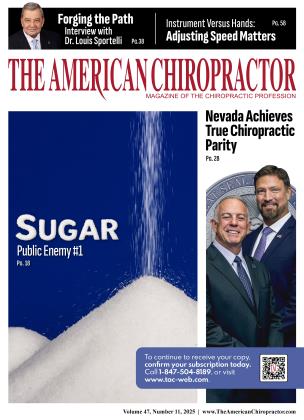Your Essential Prenatal Supplement
Momma and Baby Need You

“One of the most fundamental benefits of a healthy first and second meal is that the neonate achieves Th1/Th2 immune balance.”
A BABY’S “FIRST MEAL” CONSISTS OF THE MOTHER’S MICROBIOTA, picked up while sliding and slurping through the birth canal. The good bacteria obtained double every 20 minutes, coating the GI tract with slime, and within a day, the slime-slick is selectively permeable.
Since success in this initial and critical exposure upon passage through the vagina depends on the quality of the mother’s microbiota, it is essential that Momma supplement with prebiotics and probiotics (a synbiotic supplement) through her entire pregnancy. That maternal colonization (or the lack of it) has far-reaching health effects that will persist throughout her infant’s childhood and into adulthood.^2-3-4 5,6
L. reuteri is an essential probiotic among the bacteria transferred to the newborn via the vaginal transmission, although lactic acid species account for less than 1% of the total microbiota in infants, and Bifidobacteria make up 60% to 90 % of their total fecal microbiota. Among other most immune-strengthening species found in healthy postnatal infants are B. breve and B. longum. L. reuteri is transferred to the newborn via vaginal transmission and significantly present in human milk, as are several Bifidobacteria species.7-8-9
That brings us to baby’s second meal — colostrum — which contains both prebiotics and probiotics. L. reuteri supplementation during late pregnancy reduces the breast milk levels of a baby’s immune system stressor TGF-beta2, and low levels of this inflammatory cytokine are associated with less allergic sensitization and less IgE-associated eczema in breastfed infants. Colostrum also contains significant levels of the anti-inflammatory cytokine IL-10.
One of the most fundamental benefits of a healthy first and second meal is that the neonate achieves Thl/Th2 immune balance. Neonatal Thl stimulus is essential. During gestation, there is a skewing toward Th2 immune dominance in both mother and fetus. The Th2 dominance suppresses Thl, preventing the mother and fetus from rejecting each other.
At four to five weeks prenatal, the fetal thymus develops, and “self’ is developed. “Foreign” is developed in infancy, beginning with the probiotic and prebiotic first two meals, ideally reflecting the mother’s healthy microbiome.8.10,11,12
You must direct your focus to probiotics and prebiotics. Colostrum contains prebiotic oligosaccharides, such as inulin-type fructans, which are not digested in baby’s small intestine but enter the colon as intact large carbohydrates that are then fermented by the healthy bacteria received from Momma to produce short-chain fatty acids and other health-promoting end-products. The inulin-type prebiotics particularly increase the production of Bifidobacteria and some Lactobacilli (whereas formula-fed infants produce more Enterococci and Enterobacteria).13-14
The growing immune power promoted by probiotic fermentation is important for the development and sustainment of intestinal barrier function. A healthy microbiota received from the mother stimulates the synthesis of secretory IgA, the antibody that coats and protects mucosal surfaces against harmful bacterial invasion.
Note that the greatest difference between infants who are provided with a healthy first two meals and infants who are not, or infants who are formula-fed, is the ratio of Bifidobacteria to lactic acid bacteria, which indicates more protective immune system development. Lactobacillus acidophilus is a species that needs to be minimized, and it occurs in high quantities in formula-fed infants.
L. paracasei, along with L. reuteri, is among the few Lactobacillus probiotics supporting immune system development in healthy neonates. L. paracasei decreases the risk of developing IgE allergies. L. acidophilus colonization is found in only 14% of one-month-old infants and confers no protection against atopic disease.15-16-17-18
Early colonization of the neonatal gut with a healthy mother ’s microbiota promotes a strong yet balanced immune response that persists throughout lactation and beyond weaning. The central role of mother’s microbiota in the development of baby’s mucosal immunity is your most important consideration for pregnant patients.
The intestinal mucosa in the baby, just as in the mother, represents the largest surface area in contact with antigens of the external environment. The dense carpet of the gut microbiota overlying the mucosa accounts for the largest portion of the antigens presented to immune cells, and it is this antigen presentation that stimulates the pattern recognition receptors of intestinal epithelial cells.19-20-21
Now that we have considered the fundamental need to ensure transfer of probiotics and prebiotics in the first two meals, let us go back nine months. Synbiotic supplementation is not something your pregnant patients need to consider only in the last month or two of gestation.
The crucial consideration of immune transfer to baby requires attention from the very beginning of pregnancy. Obviously, a more thoroughly established mother’s microbiota will be achieved by many months of supplementation.
There is another consideration, though. Bacterial vaginosis in pregnancy is a clinical condition caused by the replacement of adequate hydroperoxide-producing probiotic species in the vagina with high concentrations of putrefactive aerobic and anaerobic bacteria. The condition is present in 40% or more of women (both within and outside of pregnancy), and 50% of women with this condition are asymptomatic.
There is a strong correlation between bacterial vaginosis and maternal and fetal morbidity. Studies show that the chances of spontaneous abortion, preterm labor, premature birth, preterm premature rupture of the membranes, amniotic fluid infection, postpartum endometriosis, and post-Cesarean wound infections are increased because of bacterial vaginosis during pregnancy. When there is any significant degree of maternal vaginosis, baby is covered with unhealthy microbiota in the birth canal, so that the earlier in pregnancy a woman addresses her need for healthy microbiota, the better for both her and her baby.22,23
Do you begin to appreciate how fundamental it is to colonize a baby’s gut immediately at birth? Probiotics and prebiotics obtained at birth are an absolute prerequisite for baby’s immune system maturation. The benefits of supplementing your pregnant patients with a synbiotic extend far beyond this gut-immune axis. Transmission of a healthy microbiota from Momma to baby is merely the first step, driving the development of baby’s:
• Gut-brain axis24
• Gut-hypothalamus axis 25
• Gut-liver axis 26
• Gut-adipose axis 27
• Gut-pancreas axis 28
• Gut-muscle axis 29
• Gut-immune system axis 30
Will the infant develop a solid blood-brain barrier via the gut-brain axis?31 Is baby destined to become obese during childhood and into adulthood? Obesity in children is largely created by mother’s microbiota, driving her infant’s gut-liver and gut-adipose axes.32 Are mood disorders programmed into this neonate’s future?33
Do you appreciate the profound influence you will have on pregnant patients with synbiotic supplementation? Both the health of the pregnancy and development of the fetus-neonate-infant depend on probiotics, specifically your selection of L. reuteri, L. paracasei, L. rhamnosus, B. breve, and B. longum. Just as critical are prebiotics, with an emphasis on inulin. Momma and baby need you.

Dr. Guy Schenker, a Pennsylvania chiropractor since 1978, is the developer of the Nutri-Spec System of Clinical Nutrition, which eschews symptom-based nutrition in favor of individualized metabolic therapy. Nutri-Spec offers a Stage of Life Diphasic Nutrition Plan (SOLID DNP), empowering each patient to live stronger longer. Contact information: 800-736-4320, [email protected], or through Nutri-Spec.net.
1. Van Daele E, Knol J, Belzer C. Microbial transmission from mother to child: improving infant intestinal microbiota development by identifying the obstacles. Crit Rev Microbiol. 2019 Sep-Nov;45(5-6):613-648. doi: 10.1080/1040841X.2019.1680601. Epub 2019 Dec 20. PMID: 31859540.
2. Selma-Royo M, Dubois L, Manara S, Armanini F, Cabrera-Rubio R, Valles-Colomer M, Gonzalez S, Parra-Llorca A, Escuriet R, Bode L, Martinez-Costa C, SegataN, Collado MC. Birthmode and environment-dependent microbiota transmission dynamics are complemented by breastfeeding during the first year. Cell Host Microbe. 2024 Jun 12;32(6):996-1010.e4. doi: 10.1016/j.chom.2024.05.005. PMID: 38870906; PMCID: PMC11183301.
3. Wang S, Ryan CA, Boy aval P, Dempsey EM, Ross RP, Stanton C. Maternal vertical transmission affecting early-life microbiota development. Trends Microbiol. 2020 Jan;28(l):28-45. doi: 10.1016/j. tim.2019.07.010. Epub 2019 Sep 3. PMID: 31492538.
4. Buchanan KL, Bohorquez DV. You are what you (first) eat. Front Hum Newosci. 2018 Aug 13;12:323. doi: 10.3389/fnhum.2018.00323. PMID: 30150928; PMCID: PMC6099179.
5. 5. Raspini B, Porri D, De Giuseppe R, Chieppa M, Liso M, Cerbo RM, Civardi E, Garofoli F, Monti MC, Vacca M, De Angelis M, Cena H. Prenatal and postnatal determinants in shaping offspring's microbiome in the first 1000 days: study protocol and preliminary results at one month of life.
6. Van Daele E, Knol J, Belzer C. Microbial transmission from mother to child: improving infant intestinal microbiota development by identifying the obstacles. Crit Rev Microbiol. 2019 SepNov;45(5-6):613-648. doi: 10.1080/1040841X.2019.1680601. Epub 2019 Dec 20. PMID: 31859540.
7. Selma-Royo M, Dubois L, Manara S, Armanini F, Cabrera-Rubio R, Valles-Colomer M, Gonzalez S, Parra-Llorca A, Escuriet R, Bode L, Martinez-Costa C, SegataN, Collado MC. Birthmode and environment-dependent microbiota transmission dynamics are complemented by breastfeeding during the first year. Cell Host Microbe. 2024 Jun 12;32(6):996-1010.e4. doi: 10.1016/j.chom.2024.05.005. PMID: 38870906; PMCID: PMC11183301.
8. Wang S, Ryan CA, Boyaval P, Dempsey EM, Ross RP, Stanton C. Maternal vertical transmission affecting early-life microbiota development. Trends Microbiol. 2020 Jan;28(l):28-45. doi: 10.1016/j. tim.2019.07.010. Epub 2019 Sep 3. PMID: 31492538.
9. Buchanan KL, Bohorquez DV. You are what you (first) eat. Front HumNeurosci. 2018 Aug 13;12:323. doi: 10.3389/fnhum.2018.00323. PMID: 30150928; PMCID: PMC6099179.
10. Raspini B, Porri D, De Giuseppe R, Chieppa M, Liso M, Cerbo RM, Civardi E, Garofoli F, Monti MC, Vacca M, De Angelis M, Cena H. Prenatal and postnatal determinants in shaping offspring's microbiome in the first 1000 days: study protocol and preliminary results at one month of life. Itai J Pediatr. 2020 Apr 15;46(1):45. doi: 10.1186/ S13052-020-0794-8. PMID: 32293504; PMCID: PMC7158098.
11. Takiishi T, Fenero CIM, Camara NOS. Intestinal barrier and gut microbiota: Shaping our immune responses throughout life. Tissue Barriers. 2017 Oct2;5(4):el373208. doi: 10.1080/21688370.2017.1373208. Epub 2017 Sep 28. PMID: 28956703; PMCID: PMC5788425.
12. Liu Y, Huang Y, Cai W, Li D, Zheng W, Xiao Y, Liu Y, Zhao H, Pan S. [Effect of oral Lactobacillusrhamnosus GR-1 and Lactobacillusreuteri RC-14 on vaginal group B Streptococcus colonization and vaginal microbiome in late pregnancy]. Nan Fang Yi Ke Da Xue Xue Bao. 2020 Dec 30;40(12):1753-1759. Chinese, doi: 10.12122/j. issn.1673-4254.2020.12.09. PMID: 33380389; PMCID: PMC7835693.
13. Forsberg A, Huoman J, Soderholm S, Bhai Mehta R, Nilsson L, Abrahamsson TR, Emerudh J, Gustafsson M, Jenmalm MC. Preand postnatal Lactobacillus reuteri treatment alters DNA methylation of infant T helper cells. Pediatr Allergy Immunol. 2020 Jul;31(5):544-553. doi: 10.1111/pai.l3240. Epub 2020 Apr 3. PMID: 32150651.
14. Lu J, Fan X, Lu L, Yu Y, Markiewicz E, Little JC, Sidebottom AM, Claud EC. Limosilactobacillus reuteri normalizes blood-brain barrier dysfunction and neurodevelopment deficits associated with prenatal exposure to lipopolysaccharide. Gut Microbes. 2023 JanDec;15(l):2178800. doi: 10.1080/19490976.2023.2178800. PMID: 36799469; PMCID: PMC9980478.
15. Bottcher MF, Abrahamsson TR, Fredriksson M, Jakobsson T, Bjorkstdn B. Low breast milk TGF-beta2 is induced by Lactobacillus reuteri supplementation and associates with reduced risk of sensitization during infancy. Pediatr Allergy Immunol. 2008 Sep;19(6):497-504. doi: 10.1111/j.1399-3038.2007.00687.x. Epub 2008 Jan 22. PMID: 18221472.
16. Dzidic M, Mira A, Artacho A, Abrahamsson TR, Jenmalm MC, Collado MC. Allergy development is associated with consumption of breastmilk with a reduced microbial richness in the first month of life. Pediatr Allergy Immunol. 2020 Apr;31(3):250-257. doi: 10.1111/ pai.13176. Epub 2019 Dec 11. PMID: 31736150.
17. Yu R, MaY, Luo Z, Qi C, Xie A, Jiang Y, Zhu B, Sun J. Maternal supplementation with Limosilactobacillus reuteri FN041 for preventing infants with atopic dermatitis: study protocol for a randomized controlled trial. Front Microbiol. 2023 Oct 5;14:1267448. doi: 10.3389/ fmicb.2023.1267448. PMID: 37869669; PMCID: PMC10588667.
18. Veereman G. Pediatric applications of inulin and oligofructose. J Nutr. 2007 Nov;137(ll Suppl):2585S-2589S. doi: 10.1093/ jn/137.11.2585S. PMID: 17951508.
19. Kong C, Akkerman R, Klostermann CE, Beukema M, Oerlemans MMP, Schols HA, de Vos P. Distinct fermentation of human milk oligosaccharides 3-FL and LNT2 and GOS/inulin by infant gut microbiota and impact on adhesion of Lactobacillus plantarum WCFS1 to gut epithelial cells. Food Funct. 2021 Dec 13;12(24): 12513-12525. doi: 10.1039/dlfo02563e. PMID: 34811557
20. Qi C, Tu H, Zhou J, Tu R, Chang H, Chen J, Hu H, Yu R, Sun J. Widespread vertical transmission of secretory immunoglobulin A coated trace bacterial variants from the mother to infant gut through breastfeeding. FoodFunct. 2022 Nov 14;13(22):11543-11554. doi: 10.1039/ d2fo01244h. PMID: 36260082.
21. Mu Q, Swartwout BK, Edwards M, Zhu J, Lee G, Eden K, Cabana-Puig X, McDaniel DK, Mao J, Abdelhamid L, Brock RM, Allen IC, Reilly CM, Luo XM. Regulation of neonatal IgA production by the maternal microbiota. Proc Natl Acad Sci USA. 2021 Mar 2;118(9):e2015691118. doi: 10.1073/pnas.2015691118. PMID: 33619092; PMCID: PMC7936341.
22. Penders J, Thijs C, Mommers M, Stobberingh EE, Dompeling E, Reijmerink NE, van den Brandt PA, Kerkhof M, Koppelman GH, Postma DS. Intestinal lactobacilli and the DC-SIGN gene for their recognition by dendritic cells play a role in the aetiology of allergic manifestations. Microbiology (Reading). 2010 Nov;156(Pt ll):3298-3305. doi: 10.1099/mic.0.042069-0. Epub 2010 Sep 9. PMID: 20829290.
23. Amalia N, Orchard D, Francis KL, King E. Systematic review and meta-analysis on the use of probiotic supplementation in pregnant mother, breastfeeding mother and infant for the prevention of atopic dermatitis in children. Australas J Dermatol. 2020 May;61(2):el58-el73. doi: 10.1111/ajd.l3186. Epub 2019 Nov 12. PMID: 31721162.
24. Torres J, Hu J, Seki A, Eisele C, Nair N, Huang R, Tarassishin L, Jharap B, Cote-Daigneault J, Mao Q, Mogno I, Britton GJ, Uzzan M, Chen CL, Kombluth A, George J, Legnani P, Maser E, Loudon H, Stone J, Dubinsky M, Faith JJ, Clemente JC, Mehandru S, Colombel JF, Peter I. Infants bom to mothers with IBD present with altered gut microbiome that transfers abnormalities of the adaptive immune system to germ-free mice. Gut. 2020 Jan;69(l):42-51. doi: 10.1136/gutjnl-2018-317855. Epub 2019 Apr 29. PMID: 31036757.
25. Forchielli ML, Walker WA. The role of gut-associated lymphoid tissues and mucosal defence. Br JNutr. 2005 Apr;93 Suppl LS41-8. doi: 10.1079/bjn20041356. PMID: 15877894.
26. Rabe H, Lundell AC, Sjoberg F, Ljung A, Strombeck A, Gio-Bafta M, Maglio C, Nordstrom I, Andersson K, Nookaew I, Wold AE, Adlerberth I, Rudin A. Neonatal gut colonization by Bifidobacterium is associated with higher childhood cytokine responses. Gut Microbes. 2020 Nov 9;12(1):1-14. doi: 10.1080/19490976.2020.1847628. PMID: 33274676;
PMCID: PMC7747801.
27. McGregor JA, French JI. Bacterial vaginosis in pregnancy. Obstet Gvnecol Surv. 2000 May;55(5 Suppl 1):S1-19. doi: 10.1097/00006254200005001-00001. PMID: 10804540.
28. Flores Ventura E, Esteban-Torres M, Gueimonde M, van Sinderen D, Koren O, Hall LJ, Segata N, Valles-Colomer M, Collado MC. Mother-to-infant vertical transmission in early life: a systematic review and proportional meta-analysis of Bifidobacterium strain transmissibility. NPJ Biofilms Microbiomes' 2025 Jul 1;11(1):121. doi: 10.1038/s41522-02500720-y. PMID: 40593735; PMCID: PMC12219069.
29. Cryan JF, O'Riordan KJ, Cowan CSM, Sandhu KV, Bastiaanssen TFS, Boehme M, Codagnone MG, Cussotto S, Fulling C, Golubeva AV, Guzzetta KE, Jaggar M, Long-Smith CM, Lyte JM, Martin JA, Molinero-Perez A, Moloney G, Morelli E, Morillas E, O'Connor R, Cruz-Pereira JS, Peterson VL, Rea K, Ritz NL, Sherwin E, Spichak S, Teichman EM, van de Wouw M, Ventura-Silva AP, Wallace-Fitzsimons SE, Hyland N, Clarke G, Dinan TG. The microbiota-gut-brain axis. Physiol Rev. 2019 Oct 1;99(4): 1877-2013. doi: 10.1152/physrev.00018.2018. PMID: 31460832.
30. Yin Y, Guo Q, Zhou X, Duan Y, Yang Y, Gong S, Han M, Liu Y, Yang Z, Chen Q, Li F. Role of brain-gut-muscle axis in human health and energy homeostasis. Front Nutr. 2022 Oct 6;9:947033. doi: 10.3389/ fhut.2022.947033. PMID: 36276808; PMCID: PMC9582522.
31. Tilg H, Adolph TE, Trauner M. Gut-liver axis: pathophysiological concepts and clinical implications. CeUMetab. 2022 Nov l;34(ll):17001718. doi: 10.1016/j.cmet.2022.09.017. Epub 2022 Oct 7. PMID: 36208625.
32. Konrad D, Wueest S. The gut-adipose-liver axis in the metabolic syndrome. Physiology (Bethesda). 2014 Sep;29(5):304-13. doi: 10.1152/ physiol.00014.2014. PMID: 25180260.
33. Svegliati-Baroni G, Patricio B, Lioci G, Macedo MP, Gastaldelli A. Gut-pancreas-liver axis as a target for treatment of NAFLD/NASH. Int J Mol Sci. 2020 Aug 13;21(16):5820. doi: 10.3390/ijms21165820. PMID: 32823659; PMCID: PMC7461212.
34. Chen LH, Chang SS, Chang HY, Wu CH, Pan CH, Chang CC, Chan CH, Huang HY. Probiotic supplementation attenuates age-related sarcopenia via the gut-muscle axis in S AMP8 mice. J Cachexia Sarcopenia Muscle. 2022 Feb;13(l):515-531. doi: 10.1002/jcsm.l2849. Epub 2021 Nov 11. PMID: 34766473; PMCID: PMC8818665.
35. Robertson LA. The vanishing link between animalcules and disease before the 19th century. FEMS Microbiol Lett. 2022 Feb 24;369(l):fhac022. doi: 10.1093/femsle/fnac022. PMID: 35259229.
36. Mady EA, Doghish AS, El-Dakroury WA, Elkhawaga SY, Ismail A, El-Mahdy HA, Elsakka EGE, El-Husseiny HM. Impact of the mother's gut microbiota on infant microbiome and brain development. Neurosci Biobehav Rev. 2023 Jul;150:105195. doi: 10.1016/j.neubiorev.2023.105195. Epub 2023 Apr 24. PMID: 37100161.
37. Zhou L, Xiao X. The role of gut microbiota in the effects of maternal obesity during pregnancy on offspring metabolism. Bios ci Rep. 2018 Apr 13;38(2):BSR20171234. doi: 10.1042/BSR20171234. PMID: 29208770; PMCID: PMC5897743.
38. Vicariotto F, Malfa P, Torricelli M, Lungaro L, Caio G, De Leo V. Beneficial effects of Limosilactobacillus reuteri PBS072 and Bifidobacterium breve BB077 on moodi, self-confidence, and breastfeeding in women during the first trimester postpartum. Nutrients. 2023 Aug 9;15(16):3513. doi: 10.3390/nul5163513. PMID: 37630704; PMCID: PMC10458832.
 View Full Issue
View Full Issue






